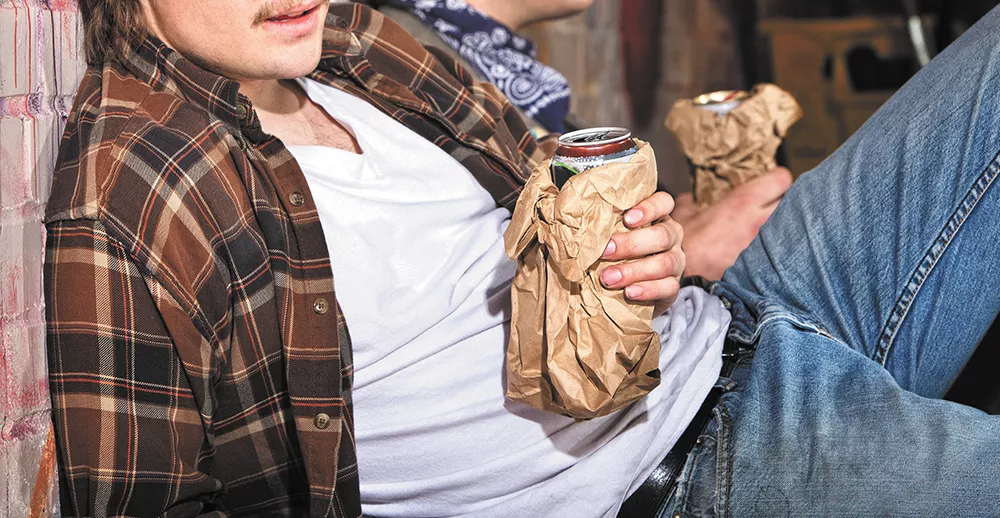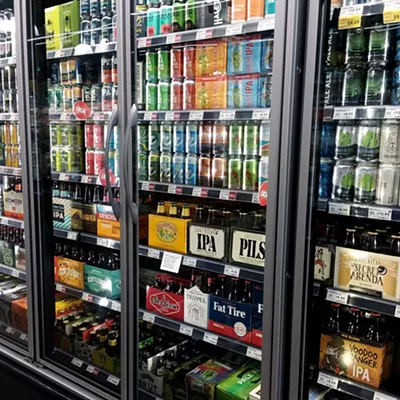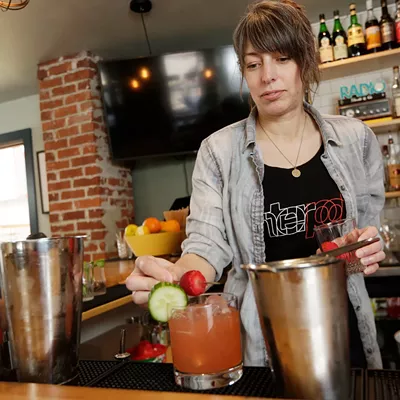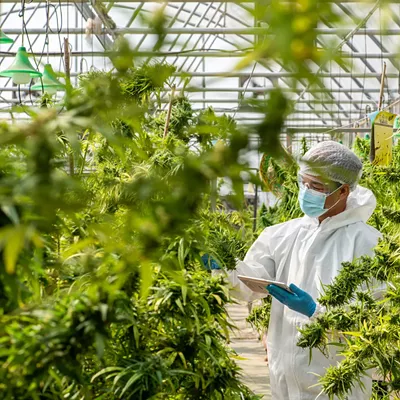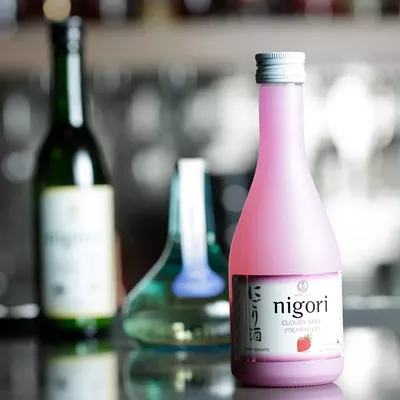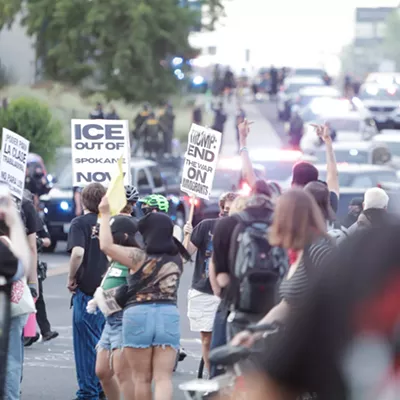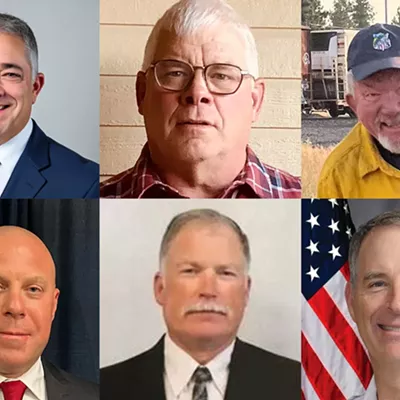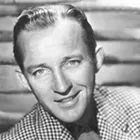It's early afternoon on a Thursday, and Tony Partridge and his friend Racecar Willy are fixing to ride out the sun-drenched day with some high-octane malt liquor. They can't get what they're looking for downtown, so they walk across the Division Street Bridge to Zag'z Liquor and Wine, where the tall, cold cans can be had for $1.39. They swing through the glass front door of Zag'z and trade three crisp dollar bills for two 25-ounce cans of Hurricane.
Outside, the pair peel off their backpacks and plunk down on a rust-colored boulder amid the rocky outcrop behind Zag'z. They crack open the first can of Hurricane. Willy's blue eyes sparkle under the brim of his black-and-red stocking cap as he pours half the amber liquid over the ice in his blue water bottle. Ice helps the taste, he says.
"I'm an alcoholic. Living on the streets, it's not easy," says Partridge. "I've gotten into trouble, stole alcohol and went to prison for eight months."
Partridge has been homeless or in prison since January 1, 2012. He had been sober for 10 months when his mother died, and things began to unravel. He started drinking again. Lost his home. Began cruising West Riverside Avenue with a water bottle full of Hurricane. The constant shuffle to nowhere in particular is easier with the malt liquor, when he can afford it.
In 2010 Spokane decided it was time for guys like Partridge and Willy to stop drinking away their days downtown.
The city asked the state Liquor Control Board to implement an Alcohol Impact Area, and the board obliged on May 15, 2010, banning the sale of cheap, high-alcohol-content beverages in the downtown core. Five years later, the liquor board is assessing whether it has worked.
Measuring chronic public inebriation isn't an exact science. The Spokane Police Department examines 13 types of calls that serve as indicators of the policy's effectiveness. The list includes the obviously alcohol-related "Requests for Detox Transport" as well as fuzzier categories like panhandling, jaywalking and lewd conduct. So far, the results have been mixed. Detox transport and panhandling calls have decreased substantially downtown. However, reports of disorderly conduct, arguments, welfare checks and trespassing all are on the rise.
Overall, the total number of alcohol-associated crimes increased by 20 percent from 2012 to 2013, and then by a modest 4.5 percent in 2014.
Year-to-year comparisons are tricky. The Spokane Police Department has beefed up its presence downtown since the ban was implemented, and in 2012 alcohol sales were privatized under Initiative 1183.
Data aside, support is strong for the alcohol ban, and Mayor David Condon's spokesman Brian Coddington is confident that the ban will be renewed.
"Anecdotally, the feedback is that people really like it," says Coddington. "The comments from Washington State University campus security and the Downtown Spokane Partnership ambassadors have been positive."
No one else has commented, says Mary Segawa of the state Liquor Control Board. The three liquor board members will meet next month and decide whether to renew the ban.
"Privatization of liquor added another wrinkle to this, so you got rid of malt liquor and added hard alcohol," says Spokane City Councilman Jon Snyder. "If we hadn't had [the ban] and we had added hard alcohol, the problem would probably be worse."
At the downtown Rite Aid, the strongest and cheapest alcohol option is the Monarch Vodka. A fifth of 100-proof Monarch was on sale for $7.99 plus tax last week.
"We sell a lot of the Monarch," says clerk Doug McPhail, laughing. "We run out."
Crossing bridges might not be a big deal to guys like Partridge and Willis. But for 67-year-old Bull Willis, it's too much trouble this afternoon. He settled for a $5.99 six-pack of 18-ounce cans of Bud Ice from the Shop Around the Corner by the STA Plaza. The cans swing from his right hand in a black plastic bag while his left hand guides a roller suitcase the size of a small person. A country musician, Willis drifts between Missoula and Spokane, busking and passing the time.
"It's not the most alcohol for the cheapest price," says Willis in his unmistakable Texas twang. "But it'll do the job."
Back at Zag'z, just across the Division Street Bridge, manager Andrew Swanson says he sells a decent amount of Hurricane, Earthquake and other high-octane beverages, but the store isn't making a killing on these products. Swanson has to compete with supermarkets and big-box liquor stores; he does so, he says, by offering the widest possible selection of alcoholic beverages, from the top-shelf liquors to the cans most commonly found crushed in gutters.
Outside, Partridge and Willy sit side by side on the boulder drinking the day away. No one looks, no one stops to chat. On this unlikely outpost across from downtown, it's like they're invisible. In that way, then, downtown's Alcohol Impact Area is working as planned. ♦

